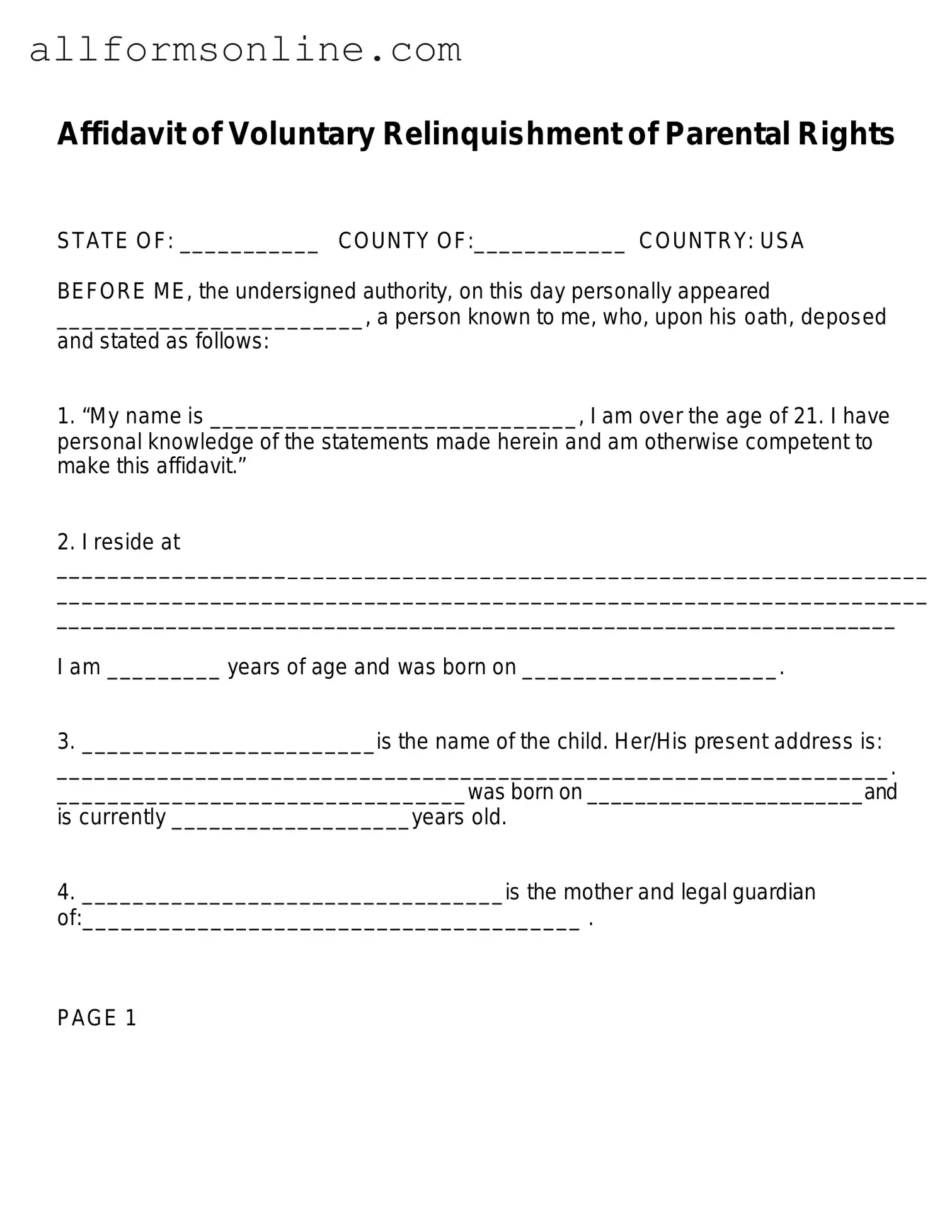What is an Affidavit of Voluntary Relinquishment of Parental Rights?
This document is a legal statement where a parent voluntarily gives up their parental rights to their child. It is a formal process that requires the parent to acknowledge their understanding of the implications of this decision, which can be permanent. The affidavit must be completed and notarized to be valid.
Who can complete this affidavit?
Typically, the parent who wishes to relinquish their rights can complete this affidavit. They must be at least 21 years old and have personal knowledge of the statements made in the document. It’s important that the individual understands the consequences of their decision before proceeding.
What information is required in the affidavit?
The affidavit requires personal details about the parent, the child, and the current legal guardian. This includes names, addresses, ages, and the reasons for relinquishing parental rights. If applicable, the parent must also indicate whether they are currently under a court order to pay child support.
Can the relinquishment of parental rights be reversed?
Yes, a parent can revoke their relinquishment within 11 days of signing the affidavit. To do this, they must provide a written statement witnessed by two credible persons and verified before a notary. This statement must be delivered to the child’s mother or legal guardian and filed with the court if necessary.
What happens if I do not revoke my relinquishment within the specified time?
If you do not revoke your relinquishment within the 11-day period, the relinquishment becomes permanent. This means you will no longer have any legal rights or responsibilities towards your child, and this decision cannot be undone.
What should I do if I need more space to explain my reasons for relinquishing my rights?
If you need additional space to provide your reasons, you can attach an extra sheet to the affidavit. Be sure to number this sheet as continuation of your explanation. This allows you to fully express your thoughts and concerns.
Is there any legal assistance available for completing this affidavit?
Yes, while you can complete the affidavit on your own, it is advisable to seek legal assistance if you have any questions or concerns. A legal professional can help ensure that the document is completed correctly and that you fully understand the implications of relinquishing your parental rights.
